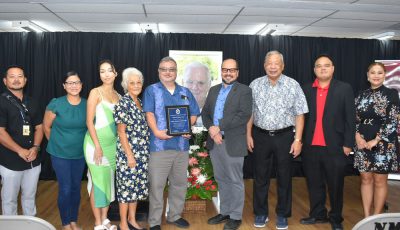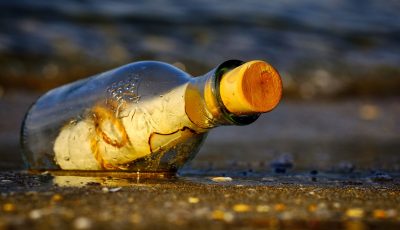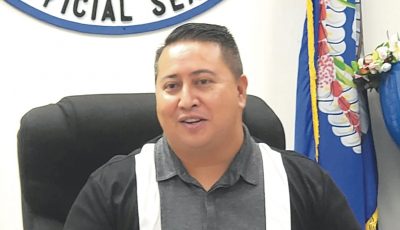Camp Susupe vs. Camp Chalan Kanoa
I have received emails asking me to clarify the difference between Camp Susupe and Camp Chalan Kanoa.
When the U.S. Fifth Fleet left Majuro Lagoon for the campaign to capture the Mariana Islands, Saipan and Guam were scheduled for invasion on June 15 and June 18, respectively. This was only one week after the long-delayed invasion of Europe on June 6. Thus, shipping for civilian relief became secondary to shipping for the combat troops and their necessary supplies.
Saipan would be the first large Pacific island to be invaded that had a significant civilian population. On D-Day Saipan, the 2nd Marine Division landed north of Sugar Dock, and the 4th Marine Division to the south of it in one of the bloodiest battles of the Pacific War. For their own safety, those civilians who surrendered on the first day were guided to the landing beaches that had been cleared by the Marines. All civilians, regardless of race, were held there with no shelter of any nature. A handful of Marines and Seabees that could be released from combat did the best they could to provide water and food to the refugees.
Five temporary, barbed-wire stockades were quickly erected on the landing beaches where security could be maintained and relief provided. The 4th Marine Division erected three in their landing area in Chalan Kanoa, while the 2nd Division erected two in Susupe. The 2nd Division also began work on a camp near Lake Susupe. By June 18 the number of refugees had reached 8,130.
On June 19, a military government was officially established on Saipan. As civilians entered the beachside camps, they were interviewed by translators to determine their nationality. Japanese military personnel were placed in a POW camp. Chamorros and Carolinians were considered “liberated” peoples, and the Koreans were identified as citizens of a country that would regain its sovereignty after the war. The Japanese civilians, on the other hand, were treated as citizens of an enemy nation and guarded to prevent acts of sabotage. Segregation of ethnic groups, Japanese, Korean, and Saipanese, was maintained in the camps.
On June 20, the Marine Corps Civil Affairs team was ordered to transfer Japanese civilians from the temporary beach stockades to Camp Susupe.
On Nov. 15, 1944, the Chamorros and Carolinians were moved out of Camp Susupe and into a new camp in Chalan Kanoa, the town formerly occupied by Japanese sugar mill employees. The Chamorros and Carolinians were allowed out of the village during daylight hours to work with the military or to farm pieces of land allotted to them for growing vegetables. They also elected their own camp leadership, managed camp operations, and established private businesses along the beach road through Chalan Kanoa.
The Japanese government in Tokyo offered to surrender shortly after the U.S. dropped atom bombs on Hiroshima and Nagasaki on Aug. 6 and 9, respectively. The surrender documents were signed on Sept. 2.
The repatriation of Saipan’s Japanese, including Okinawans, and Koreans began on Dec. 21, 1945. By late March, Camp Susupe was emptied, decommissioned, and destroyed.
The simultaneous mass exodus of military personnel in the winter of 1945-‘46 nearly depopulated the island. When Camp Chalan Kanoa was decommissioned on July 4, 1946, there were about 4,000 Chamorros and Carolinians on Saipan, along with a relative handful of military administrators. Many of the Chamorros and Carolinians living in Camp Chalan Kanoa chose to remain in the village. Some descendants of those families still live in these prewar houses.
The use of the term “liberated” in relation to the closure of Camp Chalan Kanoa is debatable. The Chamorros and Carolinians who lived out the war in Camp Chalan Kanoa had not been enslaved by the Americans, as had been the Chamorros in Guam by the Japanese from Dec. 10, 1941, until their liberation on July 21, 1944.
However, after 76 years of conducting the annual Liberation Day Parade on Saipan, it has become an integral part of the island’s culture. It provides an interesting subject for our young authors. Believe or not, there is much about the war in the Marianas that has not been adequately studied and published.
Moreover, the Liberation Day Parade is fundamentally valuable to the community, in that it provides a mechanism for people to remember the effect that “Japan’s War” had on all the Pacific people and to pray that our islands are never again used as a tool of war.
Congratulations are due to Mayor David Apatang and his staff for resurrecting the parade. I felt honored, humbled, to be one of the grand marshals. With more time and funds, next years’ parade will no doubt be even bigger and better.
Don A. Farrel (Special to the Saipan Tribune)
Don Allen Farrell is an educator, local historian, and author based on the island of Tinian in the Commonwealth of the Northern Mariana Islands. He is known for his research and publications on the history of the Marianas Islands with an emphasis on World War II.



























